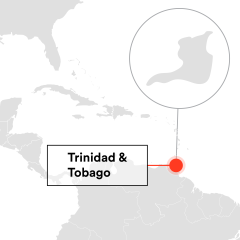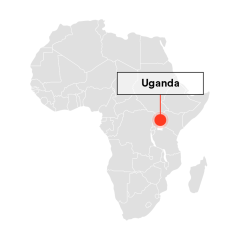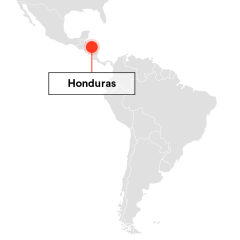Mobilise communities to end VAWG

Mobilise communities to end VAWG
Case Studies

Spotlight Initiative worked with UNFPA and the Family Planning Association of Trinidad and Tobago (FPATT) to implement the Collaborative HIV Prevention and Adolescent Mental Health Programme (CHAMP). This supported young people and adult caregivers across three regions of Trinidad and Tobago. This programme was established with a view to addressing HIV prevention but, through community engagement, reduced the likelihood of youth engaged in the programme responding to peer pressure to engage in adolescent sexual activity.
Spotlight Initiative trained around 25 community leaders as ambassadors to facilitate dialogues across different levels of the community. Over 200 young people and caregivers participated in these dialogues. The focus of the discussion was around improving knowledge and understanding across whole families and included discussions on puberty, family violence, HIV prevention, sexuality, health risks, and peer pressure. The programme worked with communities and families to encourage protective relationships between adult caregivers and the children/youth in their care. In 2022, the initiative held a workshop across the three communities, which was attended by 43 youth and parents/caregivers. During this workshop, the initiative worked to strengthen the skills and ability of participants to identify family-level characteristics of sexual risk-taking such as parental monitoring, effective discipline, conflict resolution, comfort in discussing sensitive topics, and problem-solving abilities, especially related to sexual peer pressure. This led to caregivers feeling more capable of talking to the children and youth in their care about ways to prevent GBV.
Over the course of the programme, FPATT’s GBV helpline received a 25% increase in calls due to increased awareness of the hotline among participants. This helpline connected those seeking support with social workers who could refer survivors to relevant services.



In Uganda, Spotlight Initiative supported the SASA! Together – a community mobilisation approach that supports communities to create positive and sustainable changes in the norms that perpetuate violence against women and girls. SASA! Together is a revised version of the original SASA! Approach, developed by the Ugandan NGO Raising Voices. New features of SASA! Together include a distinct focus on intimate partner violence, strategies that reach across the whole community, and more support for organisations and communities to sustain change.
The SASA! Together methodology focuses on addressing power imbalances between genders and inspired communities to start rethinking and reshaping harmful social norms. In total, Spotlight Initiative’s support to SASA! Together helped build the skills of 15,390 community workers to engage communities in social and behaviour change communication. These community workers are estimated to have influenced the attitudes, behaviours and practices of almost 185,000 people. These efforts mark a pivotal step towards shifting social norms towards more balanced relationships and healthier, safer communities.
“I learned about the different forms of power and … I learned to use the power within since I have helped many families by supporting them to access services.” - Chantal Mukeshimana, refugee community activist.
Spotlight Initiative also supported the rollout of SASA! Together in refugee contexts, where community workers have helped support communities in the process of changing social norms, as well as identifying and referring cases of violence to different service providers.



In Honduras, Spotlight Initiative implemented the Cure Violence model in areas of high prevalence of gang wars and trafficking networks. 'Violence interrupters' guided discussions, identified risk factors, and used a collective rapid prevention technique to avert 1,770 violent incidents. Key lessons from the Cure Violence model included:
- The value of a multifaceted methodology. The Cure Violence model is based on WHO’s approach to reversing the spread of infectious diseases. It has three strategies - 1) detect and interrupt potentially violent conflicts; 2) identify and treat those at high risk (ensure access to services, drug treatment, job training); 3) and mobilise communities to shift norms. The methodology involved community dialogues and youth engagement. It also included rapid response techniques, watchdog groups and data to track reductions of crime rates.
- Credible, local outreach workers play a key role. The Cure Violence model has been evaluated, and key findings suggest the important of outreach workers having shared backgrounds or coming from the same neighbourhood as the target groups - in this case it was those who are most at risk of violence, because they already had a degree of trust within the community.






